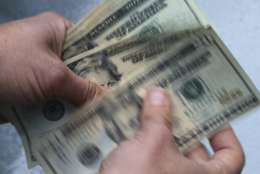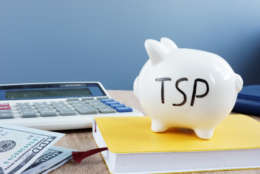Hubbard Radio Washington DC, LLC. All rights reserved. This website is not intended for users located within the European Economic Area.
On Air: Federal News Network
TSP millionaires
-
When Congress set up the TSP it told the managers to keep it simple, keep it cheap to users with low administrative fees, and to keep it apolitical.
June 16, 2020 -
Whether you are a plodder or a planner, foot-loose or up-tight, odds are your retirement checklist didn’t mention the possibility of a once-in-a-lifetime pandemic that would knock the 11-year bull market to its knees.
May 07, 2020 -
With the stock market reeling from the impact of the coronavirus who do you feel sorriest for, the 22,432 TSP millionaires or the 5 million-plus smaller investors?
April 09, 2020 -
Not so long ago in what now looks like the good old days hundreds of Thrift Savings Plan account holders were hoping to be inducted into the Millionaires Club.
April 07, 2020 -
The Thrift Savings Plan millionaires club was going strong before the coronavirus pandemic. Now, it's lost 45% of its members.
April 06, 2020 -
While there is a lot of interest in those who are self-made Thrift Savings Plan millionaires, the fact is most investors will never hit seven-figure status.
January 20, 2020 -
Thanks to the booming stock market the number of federal-postal workers with $1 million or more Thrift Savings Plan accounts jumped to 49,620 at the end of 2019.
January 14, 2020 -
Mike Causey asked Abraham Grungold, a 34-year civil servant, why so many TSP investors have account balances that are so relatively small?
January 07, 2020 -
Just about everybody knows the stock market is long overdue for a correction of 20% or more — maybe a lot more.
December 23, 2019 -
Fans of the Thrift Savings Plan hope new withdrawal rules encourage more people to stick with it when they move to another job or retire.
October 17, 2019 -
A growing number of Thrift Savings Plan investors are nervously wondering how much longer the current bull market will last, and can last.
October 16, 2019 -
Last month the Thrift Savings Plan implemented a series of changes in withdrawal rules it hopes/expects will lead to more people leaving their investments in the TSP when they leave government.
October 12, 2019 -
There were 5.6 million accounts in the TSP at the end of September. A few were just born in the right family but the majority are self-made.
October 10, 2019 -
While people are fascinated by the TSP Millionaires Club, the real question is where does your account rank in value?
October 07, 2019















